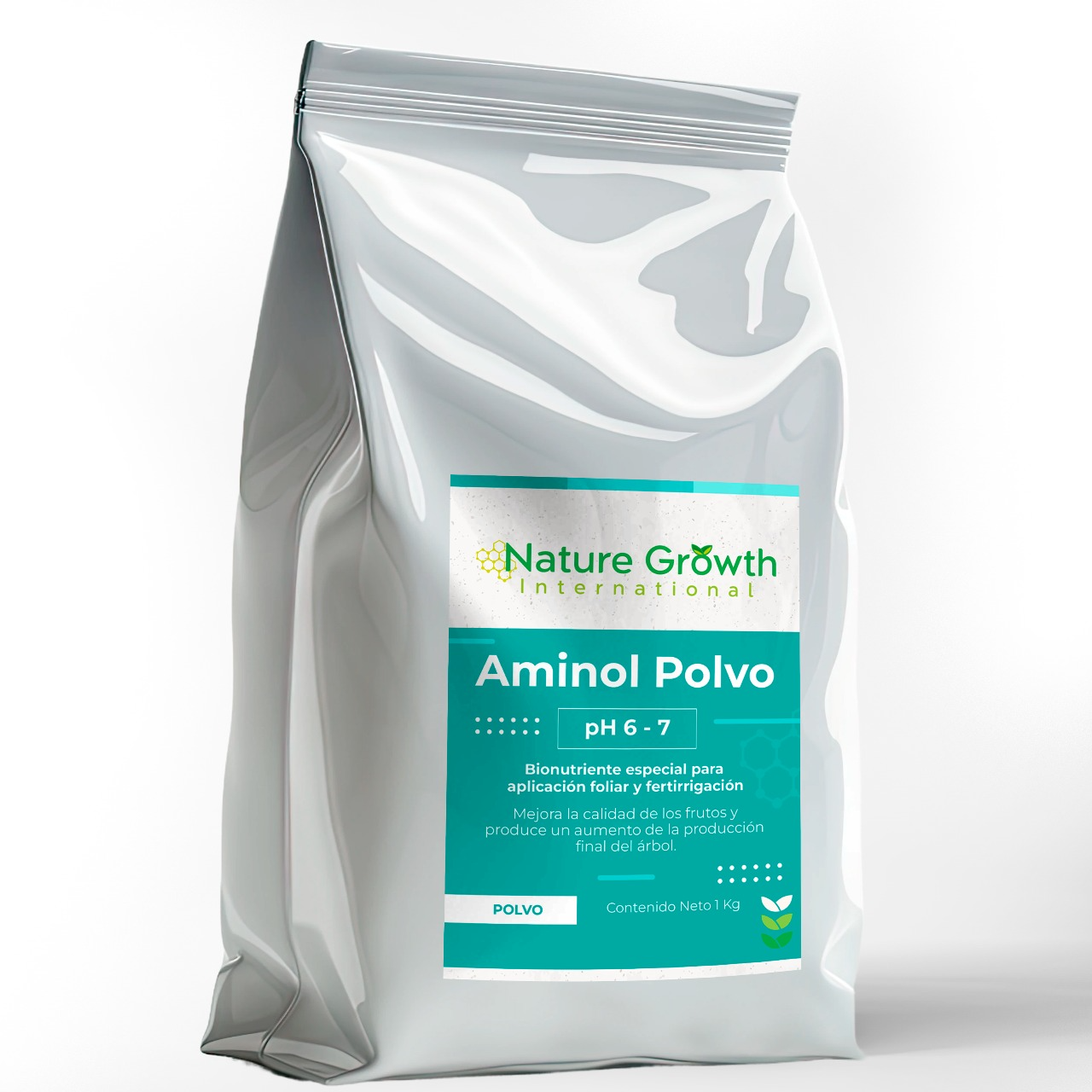Description
COMPOSITION
| Component | % w/w |
|---|---|
| Free amino acids | 6% |
| Total nitrogen (N) | 18% |
| Organic nitrogen | 1.1% |
| Nitric nitrogen | 4.30% |
| Ammoniacal nitrogen | 1% |
| Ureic nitrogen | 11.6% |
| P2O5 soluble in ammonium citrate and water | 11% |
| P2O5 water-soluble | 11% |
| K2O water-soluble | 18% |
| MgO water-soluble | 3% |
| Boron (B) water-soluble | 0.6% |
| Copper (Cu) EDTA-chelated | 0.08% |
| Manganese (Mn) EDTA-chelated | 0.08% |
| Zinc (Zn) EDTA-chelated | 0.08% |
| pH | 6–7 |
| Appearance | Soluble powder |
| Color | Pink |
MODE OF ACTION
Aminol powder is a stimulant and vegetation regulator that enhances the assimilation of nutrients in the soil, helps reduce deficiency problems, and improves fruit set rates by regulating the plant’s water balance.
Therefore, it helps improve fruit quality and increases the tree’s final yield.
RECOMMENDED DOSES
| Crop | Application | Recommended dose | Notes |
|---|---|---|---|
| Citrus and fruit trees | Foliar and fertigation | 100 g/hL in 1,000–2,000 L water/ha | 2–3 applications during pre-, post-flowering and fruit development. Enhances flowering and fruit set. |
| Olive trees | Foliar or irrigation | 100–300 g/hL or 1–3 kg/ha | 2–3 applications in March–April and during pit hardening. Improves oil yield. |
| Grapevines | Foliar | 100 g/hL in 500 L water/ha | Apply at 8–10 cm shoot stage and post-flowering. Reduces sunscald. |
| Vegetables | Foliar | 100 g/hL in 500–1,000 L water/ha | 3–4 applications from 4-leaf stage, every 20 days. Improves quality and yield. |
PRODUCT PREPARATION
Prepare a preliminary slurry by dissolving the required dose of Aminol powder in a small amount of water, add to the half-filled tank, start the agitator, and finish filling to the total volume with water.
USAGE PRECAUTIONS
- Keep out of reach of children.
- Do not eat, drink, or smoke while using the product.
- Protect from moisture.
- Keep the container tightly closed.
COMPATIBILITIES
Aminol powder is compatible with most insecticides and fungicides. Do not mix with oils; when mixing with copper (except in olives), perform compatibility tests first. In ornamentals and greenhouse crops, test before general application.
Do not apply on plum trees.


